Until now my whole server infrastructure was running on a single ODROID-XU3, with lots of harddisks connected over USB3 and an additional network interface also connected over USB3.
It’s about time to finally upgrade to a proper x86_64 machine with all disks properly mounted in an enclousure.
The storage raid will stay as is and continue to be served over samba and http(s).
Old:
Quadcore ARM processor with 32bits
2GB RAM
Running OS: Dumbuntu 16.04 (yes running ubuntu is really dumb)
Running Kernel: very outdated as usually with dumbuntu (3.19)
Booting from eMMC and 6x USB SATA 2TB Disks storage (mdadm/ext4)


New:
Intel(R) Xeon(R) CPU E3-1276 v3 @ 3.60GHz
16GB ECC RAM
Asrock e3 C224d2i Mini-ATX server mainboard with built-in KVM (runs on ARM debian 6 btw.)
Running OS: Archlinux
Running Kernel: always up to date (at server installation it was 4.9)
All 6 Harddisks are connected to SATA on the mainboard
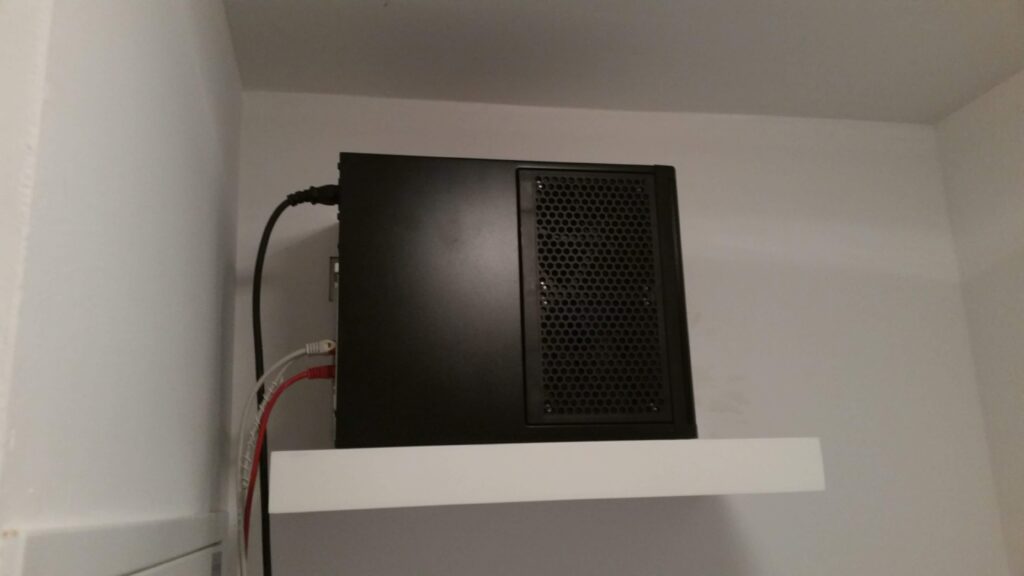
The space inside the housing is very limited and cables are constantly touching and blocking the fans, but the performance boost is incredible!
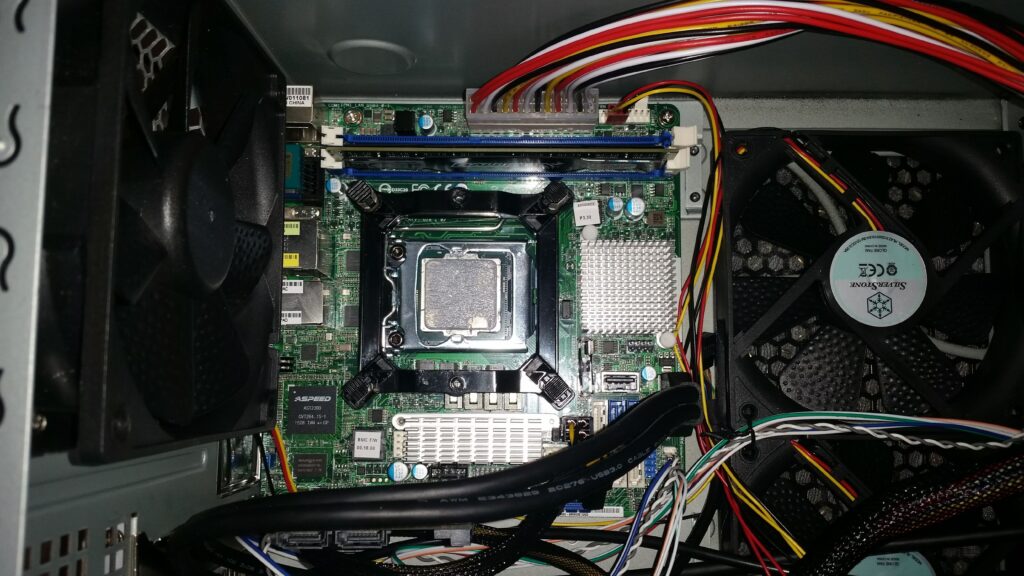
The harddisks are mounted in plastik caddies, inside there are SATA and SAS plugs available, the power is distributed from 2 MOLEX power ports, no need to build a custom SATA power splitter adapter!
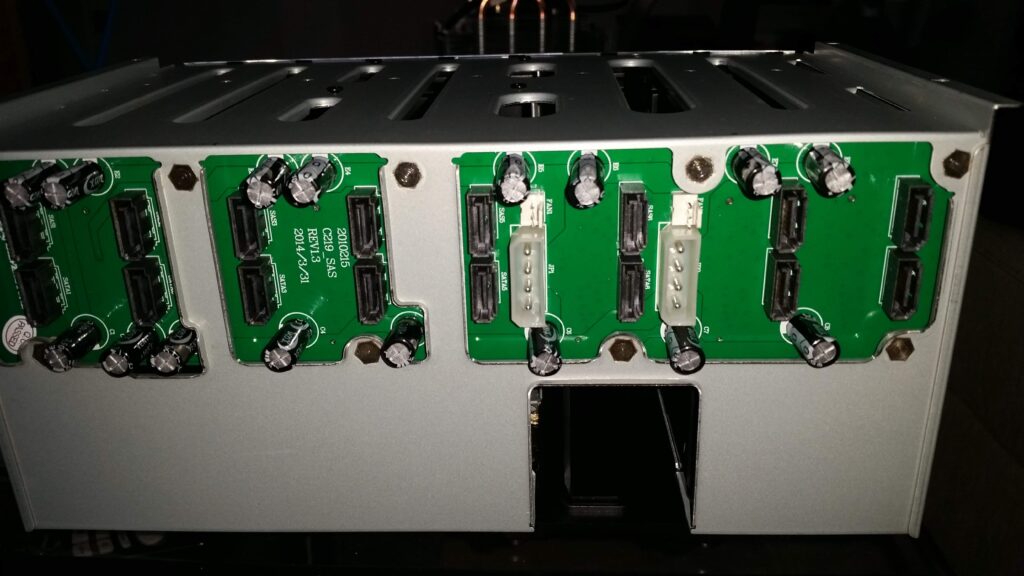
When everything is packed together in the chassis, there is not much empty space left, I wonder if any air cirulation will work at all around the CPU:
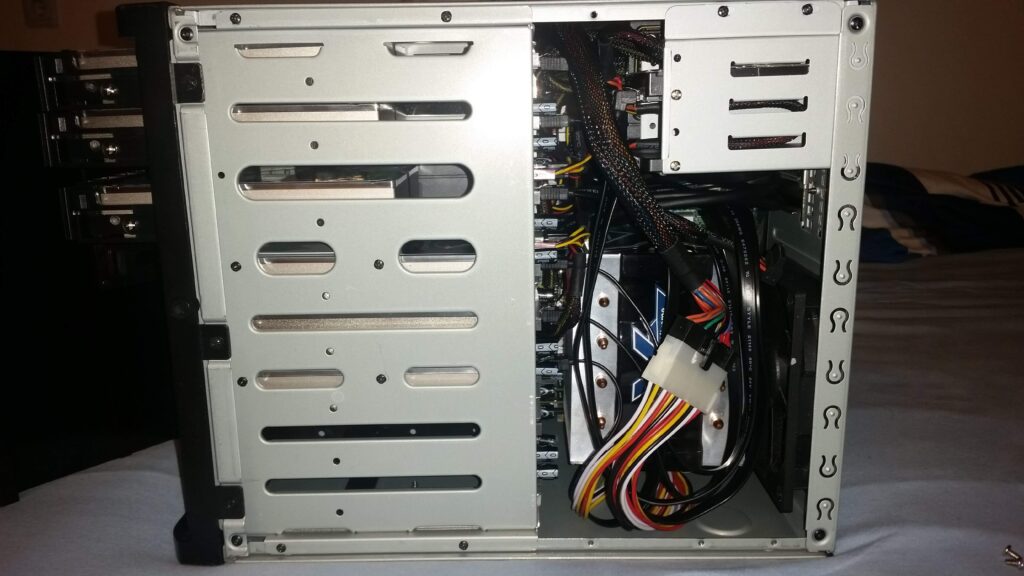
All of this this comes at a cost: The energy consumption is now around 4 times higher than with the previous setup using ODROID and usb hdd enclosures:

During the reinstallation of the whole OS I also changed a few things how I am hosting all my webhost domains. Previously on Ubuntu for Odroid I was using i-MSCP to create vhosts, manage PHP versions and create MySQL users and databases. Since it won’t work under archlinux anymore and I always wanted to customize a lot of things that weren’t possible, I chose to switch to apache and a customized config file structure for vhosts (similar to how Ubuntu did it with a2ensite).
The already existing network infrastructure allowed for easy integration of the new device:
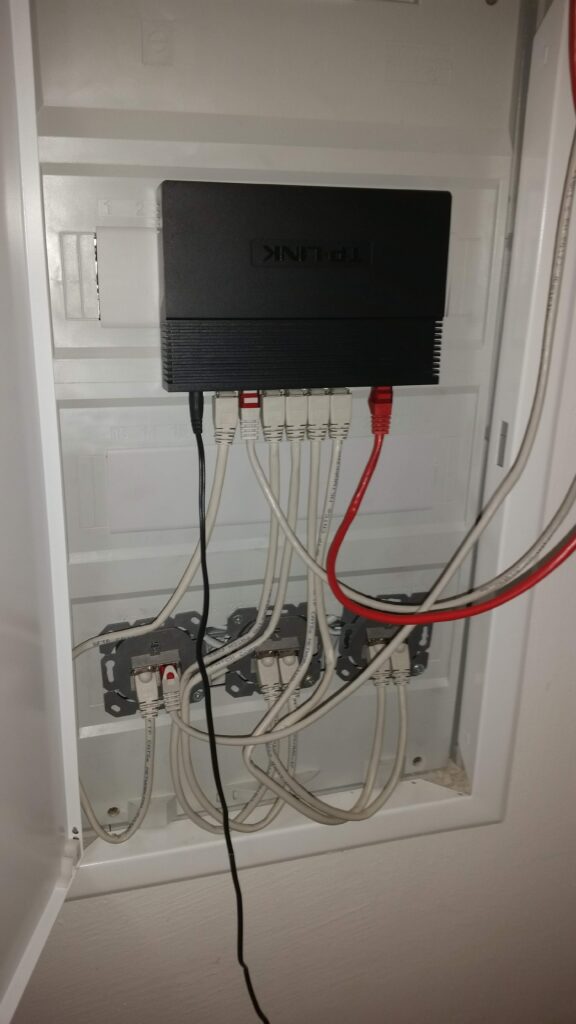
If this homepage is still online then this server didn’t break yet or was replaced already again 🙂

Schreibe einen Kommentar